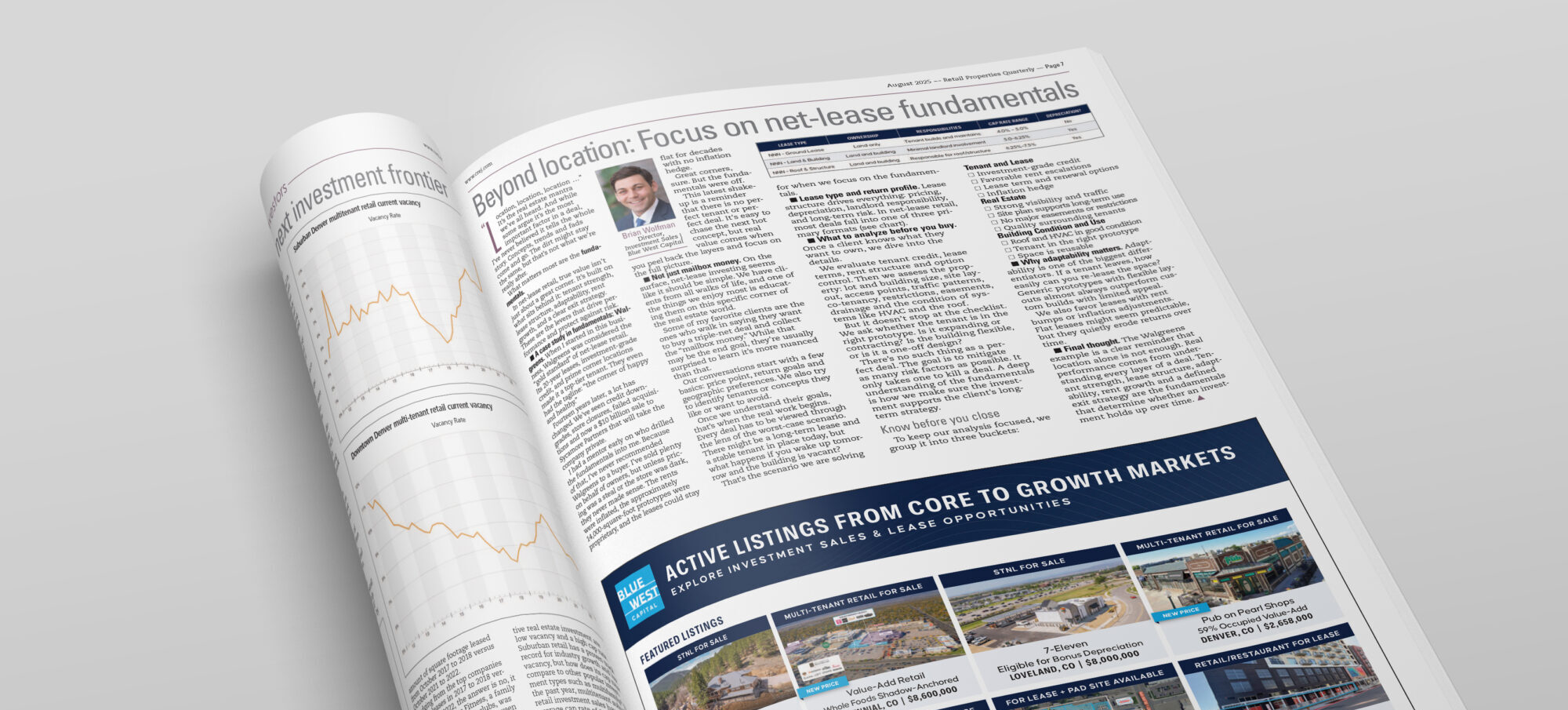For business owners who also operate out of the buildings they own, a sale-leaseback is a critical strategy to understand. If an owner-operator needs access to capital, whether to grow or sustain their business, they may literally be standing inside the answer—their commercial property. A sale-leaseback can help them unlock equity and acquire the capital they’re seeking.
This is also an important concept for active real estate investors to grasp, considering this type of transaction can potentially provide attractive yields and hassle-free, long-term lease structures.
Before we get into the benefits (and risks) of sale-leasebacks and when they might be useful, it is important to first understand the concept.
What Is a Sale-Leaseback?
Basically, sale-leaseback transactions are ones in which the seller becomes the tenant, and the buyer (investor) becomes the landlord. The seller unlocks and uses the building’s equity as working capital (cash or other current assets) instead of leaving that capital tied up as illiquid real estate. In addition, they can stay and continue operating their business out of the building, typically by negotiating a long-term lease with the buyer.
On the other side of the transaction, the investor who isn’t generally interested in operating out of the property simply benefits from being a landlord with a tenant already in place and the ability to generate immediate cash flow from lease payments.

Everyone wins with a sale-leaseback, and the seller’s business can hopefully grow more quickly or have a higher likelihood of success with increased liquid assets.
What Are the Disadvantages of a Sale-Leaseback?
While there are numerous benefits of a sale-leaseback transaction, there are a few risks to consider. One is that the seller’s business might not operate as well as it did before the sale. For this reason, buyers (landlords) should carefully underwrite the business and evaluate its ability to remain successful in the future prior to acquiring the property, which should mitigate this risk.
Another downside is that a seller will no longer benefit from appreciation in property value, and they won’t be able to depreciate the property for tax purposes going forward. A seller should therefore take into careful consideration if there’s a greater benefit in unlocking the property’s equity before moving forward with a sale-leaseback transaction.
Other Considerations for Sellers
A business owner contemplating a sale-leaseback needs to keep in mind that the deal must provide them with enough capital to operate successfully after closing and provide the yield that investors in the business will expect. In addition, they will need to propose a beneficial lease structure that incentivizes buyers to acquire the property.
To help navigate this complicated process and advise a seller on how to structure the lease, it’s crucial to work with an experienced brokerage like Blue West Capital. With Tide, the seller signed a long-term (15-year) absolute net lease with no landlord responsibilities. This is often the exact lease structure that 1031x buyers are seeking. They earn a yield that aligns with their investment strategy, without taking on any landlord responsibilities.
Another consideration in the current economic climate is the navigation of the capital markets environment, which can be tricky and requires guidance from a broker familiar with its intricacies.
With regard to lease structures, one of the most important factors is providing a net operating income (and as a result, a cap rate) that purchasers find attractive. While some 1031x buyers may have the proceeds to acquire the property outright without debt, others will require financing.
This means a seller needs to draw investor attention with the cap rate spread—the difference between the interest rate on the 10-year treasury note and the cap rate on the sale-leaseback property which reflects the risk/return to purchasers.
Additionally, commercial real estate brokers must have relationships with reputable mortgage brokers and lenders to assure sellers that purchasers can execute on their offers. Likewise, buyers need to feel confident that not only are they qualified to buy the property, but they will also have access to the current best loan terms.
Sale-Leaseback Experts You Can Trust
Hopefully, this provides some context for sale-leaseback transactions and why the arrangement is often attractive to sellers looking to unlock equity and investors seeking a hassle-free investment with high yields. Perhaps, even more apparent after reading this is how complex things can be.
For this reason, it’s imperative to work with a brokerage like Blue West Capital. Our team has helped numerous clients successfully navigate sale-leasebacks. Reach out to learn more. We look forward to working with you!
As featured in Colorado Real Estate Journal.
Featured Sale-Leaseback Opportunities
Available Sale-Leaseback Opportunities
Be the first to know about new investment properties.
Subscribe to our mailing list






